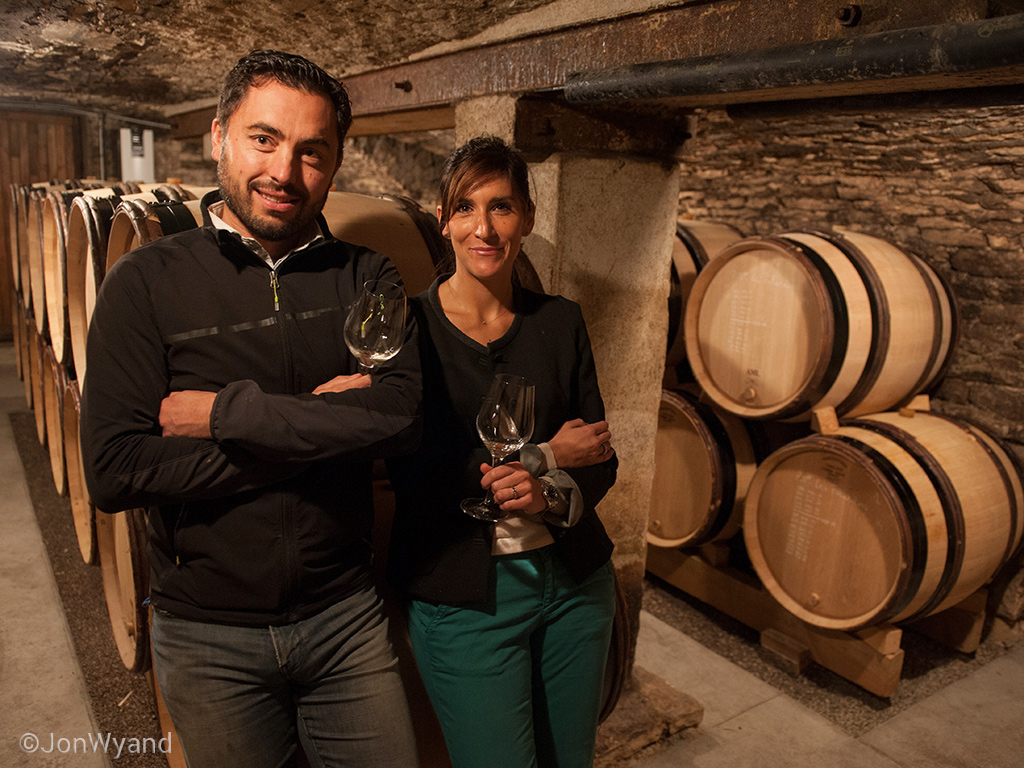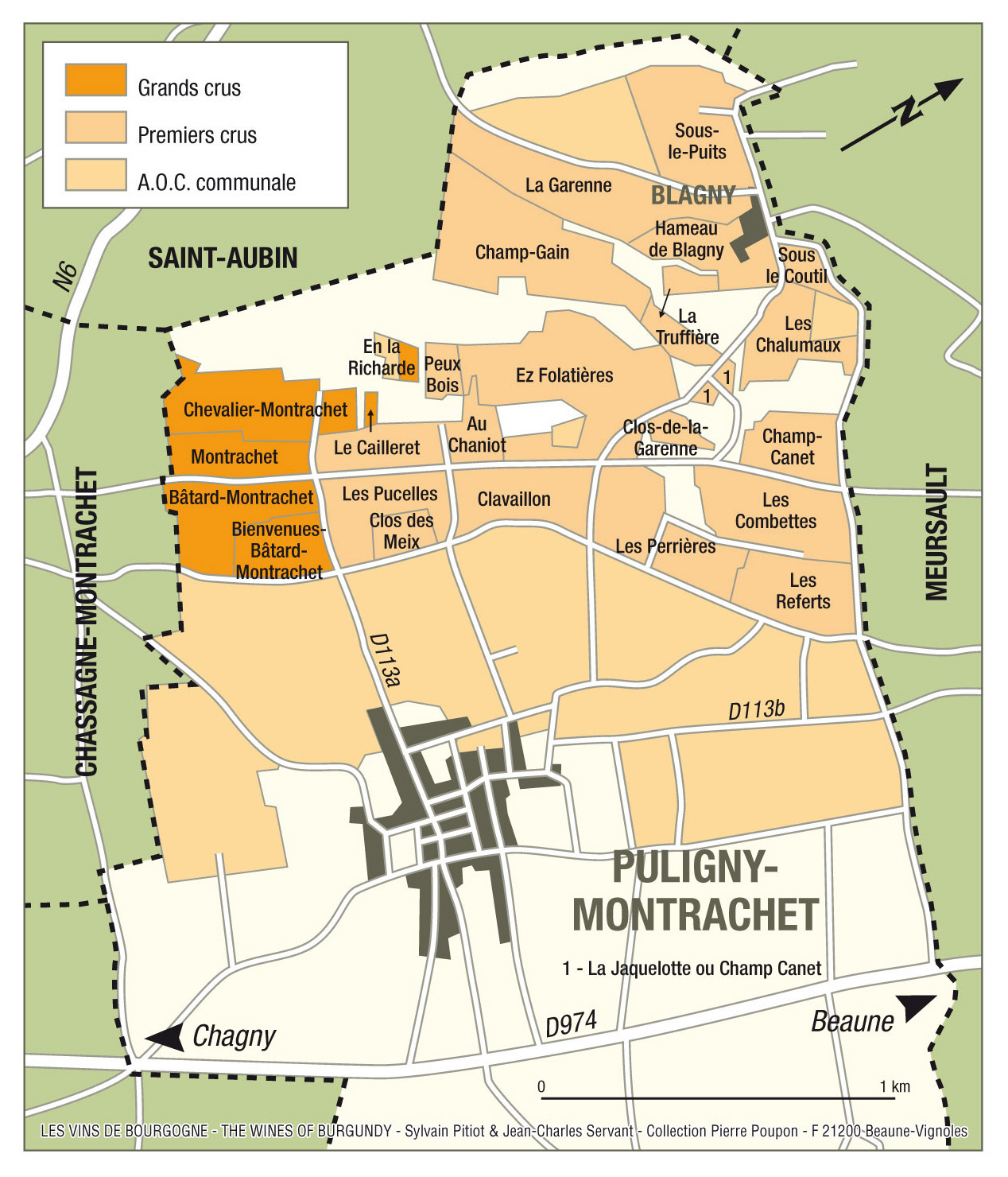Puligny-Montrachet
“Opulent, Round, Structure”
Renowned Burgundy critic Clive Coates once wrote: “Puligny-Montrachet is the greatest white-wine commune on earth.” Everyone kneels at the altar of the Grand Crus. If Burgundy is poker, Puligny got dealt a royal flush: Montrachet, Bâtard, Bienvenues, and Chevalier. Nothing beats those kingly vineyards in terms of complexity, richness, expression, and price.
But welcome to a sad reality. It’s hard to have conversations about Puligny’s great Grand Crus anymore when so few people get to drink them. Accessible only to the extremely wealthy and the sommeliers who serve them, these are beasts now very rarely seen in the field. The same goes for Puligny’s great Premier Crus - Cailleret, Clavoillon, Folatieres, Combettes. What’s left to taste is Puligny village, a rather sparse set of wines that lack the affordability and accessibility of wines from neighboring Meursault and Chassagne.
Despite this, no conversation about white Burgundy is complete without Puligny. As a place, Puligny-Montrachet is a wonderfully tight, compact appellation that’s easy to understand. The great vineyards start on a gradual slope that sharpens on its way up. The straw that stirs the drink is Montrachet. The Hope diamond of Chardonnay vineyards is set like the crown jewel amidst a coterie of other beautiful Grand Cru jewels. Montrachet is the perfect combination of factors - active (but not too active) limestone, a preponderance of stone to ensure great drainage, enough clay to round the form without becoming corpulent, an ideal exposure. Chevalier, on thinner soils higher on the slope on more active limestone, is the more edgy, mineral one. Bâtard, on more clay, is a bit rounder and richer, more golden. Bienvenue-Montrachet and Criots-Bâtard-Montrachet are round and regal, but slightly less complex and less compelling.
The Premier Crus are all north of an in line with the Grand Crus: Caillerets, Pucelles, Folatiers, Combettes. They too are excellent spots, if not producing at the weight and complexity of the Grand Crus. It’s telling, however, that there’s no transitional area between Grand Cru Bâtard-Montrachet and basic village-rated vineyards. The terroir jumps from high-born to humble in a matter of several feet. That’s because Puligny’s water table is so high; shortly after the slope ends, the ground becomes too moist to make great wine. To wit, houses in the village of Meursault have underground cellars. In Puligny, cellars must be above ground. This moist, rich soil ensures that good village-level Puligny is highly limited and tough to produce.
tasting notes
In the past, Meursault was the plump one and Puligny the lean, mineral one. That seems to have shifted; today, Meursault is the vision of straight-line minerality with lemon cream. Puligny now seems more opulent, with more body and more flesh. There’s still a sense of stoniness, but it’s a thicker band of stone compared to Meursault’s more elegant contour. Puligny’s fruit character runs riper, from lemon curd to peach and pear to slightly underripe pineapple. The texture of minerals is always at the core, but Puligny is a richer wine than Meursault.
top producers
Anne-Claude Leflaive, the late winemaker
DOMAINE LEFLAIVE
One of the great domaines in the world, it has not skipped a beat since the death of its guiding spiritual and oenological force, Anne-Claude Leflaive, in 2015. Her nephew, Brice de la Morandière, was chosen to success her and appears only intent on maintaining her high standards in farming and wine production. These wines remain Puligny of the old school, intensely mineral and powerful. From a resplendent collection of Grand Crus (including Montrachet, Chevalier-Montrachet) to wonderful Premier Crus (Pucelles, Folatières, Combettes, and Clavoillon), no other domaine so defines the village of Puligny.
Jacques Carillon, winemaker
domaine françois carillon and domaine jacques carillon
Two Carillon brothers, François and Jacques, ran the Domaine Louis Carillon until 2010, when they split into separate domaines. Before the split, these were delicious wines, capturing a lovely vision of Puligny - generously ripe, approachable Chardonnay, not too mineral or austere. Separately, the brothers appear to be continuing in the original family style, but now as two domaines with separate importers and chains of distribution, it’s much harder to find the wines. Both domaines make village and the Premier Cru Les Perrières, and you’ll find the wines to be more similar than not.
Benoit and Emilie Riffault, winemakers
domaine etienne sauzet
A revered old domaine with a flush of great Puligny holdings from Montrachet and most of the Premier Crus, the Sauzet wines show a style tends toward the opulent with big, bold flavors and a palpable dose of new oak.
detailed map
Source: Rajat Parr, The sommelier’s atlas of taste (2018); https://www.bougogne-wines.com



